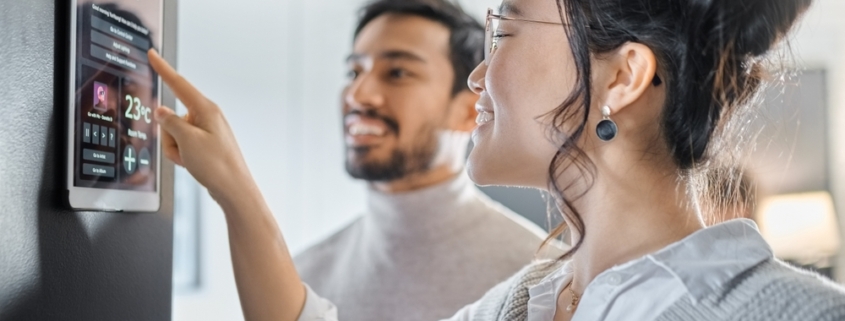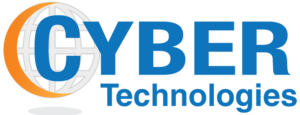Why Smart Home Projects Fail Without Proper Design (and How to Avoid It)
In recent years, homeowners in Rhinebeck, NY, and across the Hudson Valley have increasingly embraced the possibilities of smart home technology. From automated lighting and advanced climate control to voice-activated security systems and integrated entertainment, the allure of convenience and connectivity has never been stronger. Yet despite the growing popularity of these innovations, many smart home projects encounter major challenges—or even fail outright—when proper smart home design is overlooked in the early stages.
Smart home planning is not just about picking the right devices or signing up for the latest platform. It is about carefully designing a system that integrates seamlessly with the way a household functions, both technically and practically. Without this foundation, even the most expensive equipment can quickly become frustrating to use, incompatible with other systems, or underutilized altogether. The reality is that technology alone cannot guarantee success. Thoughtful design ensures that a smart home project enhances daily life rather than complicating it.
Home automation project management is where this distinction becomes most visible. Proper design means anticipating challenges in wiring, connectivity, compatibility, and user training well before any devices are installed. For homeowners in Rhinebeck, NY, where architectural variety ranges from historic farmhouses to modern builds, this becomes especially critical. What works in one home may not apply to another, and overlooking these details during the design phase is a recipe for costly mistakes.
Common Pitfalls in Smart Home Projects
One of the most common reasons smart home projects fail is a lack of coherent planning. Many homeowners begin by purchasing devices piecemeal, excited by the possibilities of a smart thermostat here or a wireless speaker system there. While these initial steps may bring convenience, they often fail to align into a cohesive system. Over time, mismatched technologies can result in redundancy, wasted money, and systems that simply don’t communicate with each other.
Another pitfall is underestimating the complexity of installation. Smart home design requires far more than plugging in a few Wi-Fi devices. For example, older homes in the Hudson Valley may have limitations in wiring, signal penetration, or electrical capacity that must be addressed before adding advanced automation systems. Without acknowledging these limitations in the design phase, homeowners often find themselves facing expensive retrofits or compromised functionality.
Equally problematic is the failure to consider the user experience. A home automation project management strategy that focuses only on technical specifications without factoring in usability is doomed to frustrate. Residents of Rhinebeck, NY, are not simply looking for a showcase of technology; they want a home that feels intuitive and easy to control. If the system requires multiple apps, complicated commands, or constant troubleshooting, even the most advanced setup will quickly fall into disuse.
Lastly, security is often neglected in poorly designed systems. Every connected device increases the risk of vulnerabilities, and overlooking secure protocols in smart home planning is a critical mistake. Homeowners in the Hudson Valley want not only convenience but also peace of mind, and cutting corners in security measures undermines the very purpose of a smart home.
How Smart Home Planning Creates Seamless Integration
Effective smart home planning is the antidote to these pitfalls. By approaching a project holistically, homeowners and integrators can ensure that every aspect of the home automation system is aligned with the household’s needs and long-term goals. This begins with a detailed consultation process that assesses not only the technical aspects of the home but also the lifestyle of the residents.
In Rhinebeck, NY, for example, many homes feature architectural details that must be preserved, requiring discreet installation solutions that do not compromise historical aesthetics. Smart home design in this context means blending technology invisibly into the home environment, ensuring that modern systems support, rather than overshadow, the charm of older properties. For newer builds in the Hudson Valley, planning allows technology to be integrated from the ground up, making systems more robust and scalable.
A comprehensive plan also accounts for interoperability. With countless brands and platforms available, careful selection is crucial to avoid fragmentation. Smart home planning ensures that chosen devices can communicate with each other seamlessly, reducing reliance on multiple apps and avoiding frustrating incompatibilities. This not only improves the user experience but also simplifies maintenance and troubleshooting down the line.
Moreover, planning provides clarity on infrastructure needs. Wi-Fi coverage, wiring requirements, and power availability are all essential considerations in home automation project management. By mapping these out in advance, homeowners avoid surprises during installation and create a system that is both stable and future-proof. Proper planning also lays the groundwork for scalability, allowing homeowners to expand their systems gradually without needing to overhaul existing components.
The Role of Professional Home Automation Project Management
While DIY smart home installations may work for small-scale projects, the complexity of modern home automation in Rhinebeck, NY, and the wider Hudson Valley often demands professional project management. Skilled integrators bring not only technical expertise but also a structured approach to design and implementation that ensures long-term success.
Home automation project management begins with clear documentation of goals, budgets, and timelines. Professionals can evaluate whether a project is feasible within the given constraints and make recommendations that align with both current needs and future growth. For example, a homeowner might initially focus on smart lighting and security but eventually want to integrate advanced energy management or whole-home audio. With proper project management, the infrastructure is designed from the outset to support these eventual upgrades.
In addition to technical expertise, project managers act as a bridge between the homeowner and the many vendors, contractors, and manufacturers involved in a smart home project. They coordinate the installation of wiring, ensure compatibility between devices, and provide guidance on system training and support. This oversight eliminates the chaos of managing multiple contractors independently and reduces the risk of costly errors or delays.
Perhaps most importantly, professional project management prioritizes the homeowner’s experience. In the Hudson Valley, where many residents value a balance between cutting-edge convenience and the region’s relaxed lifestyle, professionals ensure that the final system feels intuitive and enhances daily routines. From voice commands that simplify daily tasks to automated settings that adjust with the seasons, the result is a smart home that feels effortless rather than overwhelming.
How to Avoid Failure in Your Smart Home Project
Avoiding failure in a smart home project begins with recognizing that proper design is non-negotiable. Homeowners in Rhinebeck, NY, and throughout the Hudson Valley must resist the temptation to treat smart home planning as an afterthought. Instead, design should be the guiding principle from which all other decisions flow.
The first step is to clearly define goals. Do you want to prioritize energy efficiency, convenience, security, or entertainment? Having a clear vision helps guide decisions about devices, platforms, and infrastructure. Without this clarity, it is easy to become distracted by flashy new products that may not serve the home’s long-term needs.
The second step is to invest in professional consultation. While it may seem more economical to self-manage a project, the long-term costs of mistakes, incompatibilities, and retrofits often far outweigh the savings. Engaging a professional in smart home design ensures that the system is tailored to the unique requirements of the property and its residents.
Third, focus on scalability and future-proofing. Technology evolves rapidly, and systems designed with flexibility in mind will adapt more easily to new innovations. This is particularly important in the Hudson Valley, where many homeowners plan to stay in their properties long-term and want technology that grows with them.
Finally, never neglect security. Every smart device is a potential entry point for hackers, making robust cybersecurity measures essential. Proper planning includes implementing secure networks, regular updates, and user training to protect the home and its residents.
Conclusion
The rise of smart home technology has transformed how people live, offering unprecedented convenience, efficiency, and security. Yet the dream of a fully connected home in Rhinebeck, NY, and across the Hudson Valley often collapses without proper smart home design. Too many projects fail because they treat design as optional rather than essential, resulting in systems that are fragmented, frustrating, or insecure.
By approaching smart home planning with the seriousness it deserves, homeowners can ensure their investments pay off in the long term. Effective home automation project management provides the roadmap for seamless integration, scalability, and security, turning what might have been a failed experiment into a lasting enhancement of daily life. In the end, smart homes are not about the technology itself but about how that technology supports the way people live. With thoughtful design and careful execution, homeowners can enjoy all the benefits of a smart home without the headaches of poor planning.
Need Business & Home Automation Services in Poughkeepsie, NY?
Here at Cyber Technologies, we’re passionate about transforming your home or office into a seamless, smart environment tailored to your lifestyle today and ready for the innovations of tomorrow. With over a decade of expertise in systems integration, we specialize in creating customized solutions for everything from security systems to home automation, energy management, and audio/video systems. Whether you’re looking to enhance comfort, efficiency, or security, our team stays ahead of the curve in technology to deliver solutions designed specifically for you. Reach out to us today, and let’s design a smarter, more connected future together!




